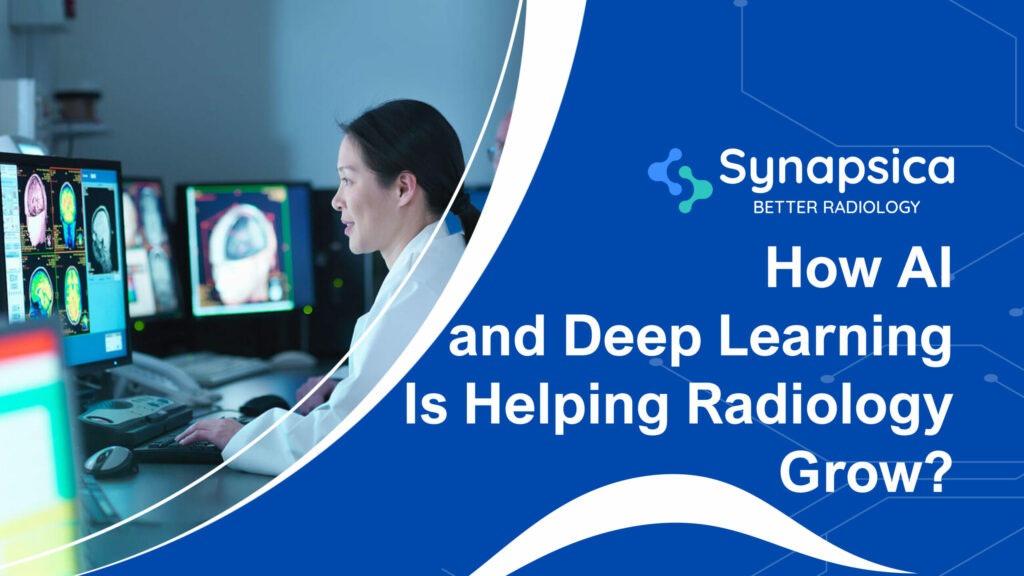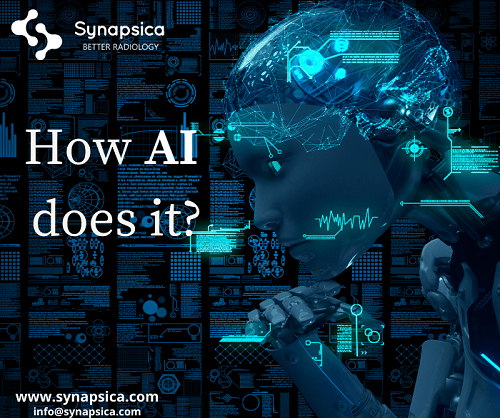
Applications of AI in radiology are revolutionizing healthcare by helping radiologists generate high-quality reports quickly. Doctors are now able to make confident decisions and diagnose patients better.
But, how is AI being applied in radiological scans to improve accuracy, efficiency, and transparency?
Overview:
Radiology is a branch of medical science that utilizes imaging techniques to let healthcare providers analyze structures present inside the body to diagnose and treat disease. Radiologists rely on medical imaging techniques such as MRI, CT, X-ray, ultrasound, etc., and select one or more of these techniques depending on the type of injury, health condition of the patient, and other health indicators.
It takes keen observation of the radiologists to analyze and prepare a detailed analytical report of the patients which is a time-consuming task. Interestingly, the technological developments in the field of computer vision, particularly with deep learning show huge promise to help radiologists and reduce their overall time in making the analytical report.

Computer vision is a branch of Artificial Intelligence in computer science which deals with images, and videos to perform operations such as classification, prediction, object detection, and tracking, multi-object segmentation, etc. in digital images or video. The recent advancements in deep learning have significantly improved the accuracy with reduced latency on these tasks.
Amalgamation of AI and Radiology:
Deep Learning is used when developing a mathematical function for a human that is either not comprehensible or very time-consuming. AI scientists design neural network-based architectures which when provided with enough good quality data can be trained to come up with such mathematical functions (i.e. trained models) to perform these complex tasks.
Computer vision-based deep learning models can be used to analyze radiological scans generated by MRI, CT, X-Ray machines. These models are used to automate medical image interpretation, workflow optimizations, and the preparation of illustrative medical reports. Although selecting a deep learning model depends on many factors such as type of task (i.e. classification, regression, object detection, segmentation), hardware limitations, acceptable latency, and budget. Still, some go-to architectures perform really well on biological images and we will deep dive into one such architecture that is U-Net.
Understanding U-Net:
U-net was created by Olaf Ronneberger, Philipp Fischer, Thomas Brox in 2015 in the paper “U-Net: Convolutional Networks for Biomedical Image Segmentation” and was one of the breakthrough architectures at the time. U-net is now widely used, especially for segmentation problems in biomedical images. The conventional neural network, U-Net, uses encoder-decoder architecture with the ideology of using the same feature maps that are used for contraction to expand a vector to a segmented image/ decoder output. It consists of three parts, a down-sampling path, bottleneck, and an expanding path.
Fig. 1 U-Net architecture
Source: https://tuatini.me/content/images/2017/09/u-net-architecture.png)
The loss function depends on the type of task one is performing (i.e. classification, regression, detection, segmentation) using the U-Net, example in the case of object segmentation it uses pixel-wise softmax over the final feature map of decoder combined with a cross-entropy loss function.
Impact:
U-net performs pixel-by-pixel classification and that is the reason it learns accurate segmentation patterns pretty well. One of the standout features of U-Net is that it can learn complex features with smaller datasets as well. These two optimizations and the growing need for architecture to train medical images have made U-Net quite popular. U-Net or their extended versions (or other deep learning models) can be applied to develop artificial intelligence-based systems that can accurately measure Central Canal (CC) in MRI images of the spine.
Selecting better deep learning architecture and availability of high-quality data helps tackle sophisticated problems in the field of radiology, and also speeds up the process of generating radiology reports while maintaining its quality.